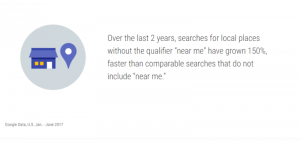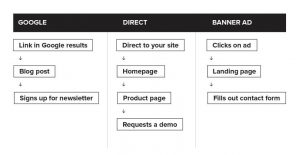by Gord Hotchkiss, Featured Contributor, September 6, 2016
Just when you thought it was safe to assume I’d be moving on to another topic, I’m back. Blame it on Ed Papazian, who commented on last week’s column about the rise of the audience marketplace.
I’ll respond to his comment in multiple parts. First, he said: “I think it’s fine to speculate on ‘audience’-based advertising, by which you actually mean using digital, not traditional media, as the basis for the advertising of the future.”
All media is going to be digital. Our concept of “traditional” media is well down its death spiral. We’re less then a decade away from all media being delivered through a digital platform that would allow for real-time targeting of advertising. True, we have to move beyond the current paradigm of mass-distributed, channel-restricted advertising we seem stuck in, but the technology is already there. We (by which I mean the ad industry) just have to catch up.
Ed continues in this vein: “However, in a practical sense, not only is this, as yet, merely a dream for TV, radio and print media, but it is also an oversimplification.”
Is it an oversimplification? Let’s remember that more and more of our media consumption is becoming trackable from both ends. We no longer have to track from the point of distribution. Tracking is also possible at the point of consumption. We are living with devices that increasingly have insight into what we’re doing at any moment of the day. It’s just a matter of us giving permission to be served relevant, well-targeted ads based on the context of our lives.
But what would entice us to give this permission? Ed goes on to say that “even if a digital advertiser could actually identify every consumer in the U.S. who is interested–or ‘in the market’ for what his ads are trying to sell and also how they are pitching the product/service–and send only these people ‘audience-targeted ads,’ many of the ads will still not be of interest.”
Ed proposed an acid test of sorts (or, more appropriately, an antacid test): “Why? Because they are for unpleasant or mundane products–toilet bowel cleansers, upset stomach remedies, etc.–or because the ads are pitching a brand the consumer doesn’t like or has had a bad experience with.”
OK, let me take up the challenge that Ed has thrown down (or up?). Are ads for stomach remedies always unwanted? Not if I have a history of heartburn, especially when my will power drops and my diet changes as I’m travellng.
Let’s take it one step further. I’ve made a dinner reservation for 7 pm at my favorite Indian food restaurant while I’m in San Francisco. It’s 2 pm. I’ve just polished off a Molinari’s sandwich and I’m heading back to my hotel. As I turn the corner at O’Farrell and Powell, an instant coupon is delivered to my phone with 50% off a new antacid tablet at the Walgreen’s ahead, together with the message: “Prosciutto, pepperoncinis and pakoras in the same day? Look at you go! But just in case…”
The world Ed talks about does have a lot of unwanted advertising. But in the world I’m envisioning, where audiences are precisely targeted, we will hopefully eliminate most of those unwanted ads.
Those ads are the byproduct of the huge inefficiencies in the current advertising marketplace. And it’s this inefficiency that is rapidly destroying advertising as we know it from both ends.
The current market is built on showing largely ineffective ads to mainly disinterested prospects — hoping there is an anomaly in there somewhere — and charging the advertiser to do so. I don’t know about you, but that doesn’t sound like a sustainable plan to me.
When I talk about selecting audiences in a market, it’s this level of specificity that I’m talking about. There is nothing in the above scenario that’s beyond the reach of current martech.
Perhaps it’s oversimplified. But I did that to make a point.
In paid search, we used to have a saying: “Buy your best clicks first.” It meant starting with the obviously relevant keywords — the people who were definitely looking for you. The problem was that there just wasn’t enough volume on these “sure-bet” keywords alone.
But as digital has matured, the amount of “sure-bet” inventory has increased. We’re still not all the way there — where we can rely on sure-bet inventory alone — but we’re getting closer. The audience marketplace I’m envisioning gets us much of the way there. When technology and data allow us to assemble carefully segmented audiences with a high likelihood of successful engagement on the fly, we eliminate the inefficiencies in the market.
I truly believe that it’s time to discard the jury-rigged, heavily bandaged and limping behemoth that advertising has become and start thinking about this in an entirely new way. Ed’s last sentence in his comment was: “You just can’t get around the fact that many ads are going to be unwanted, no matter how they are targeted.”
Do we have to accept that as our future? It’s certainly the present, but I would hate to think we can’t reach any higher. The first step is to stop accepting advertising the way we know it as the status quo.We’ll be unable to imagine tomorrow if we’re still bound by the limitations of today.
MediaPost.com: Search Marketing Daily
(12)






